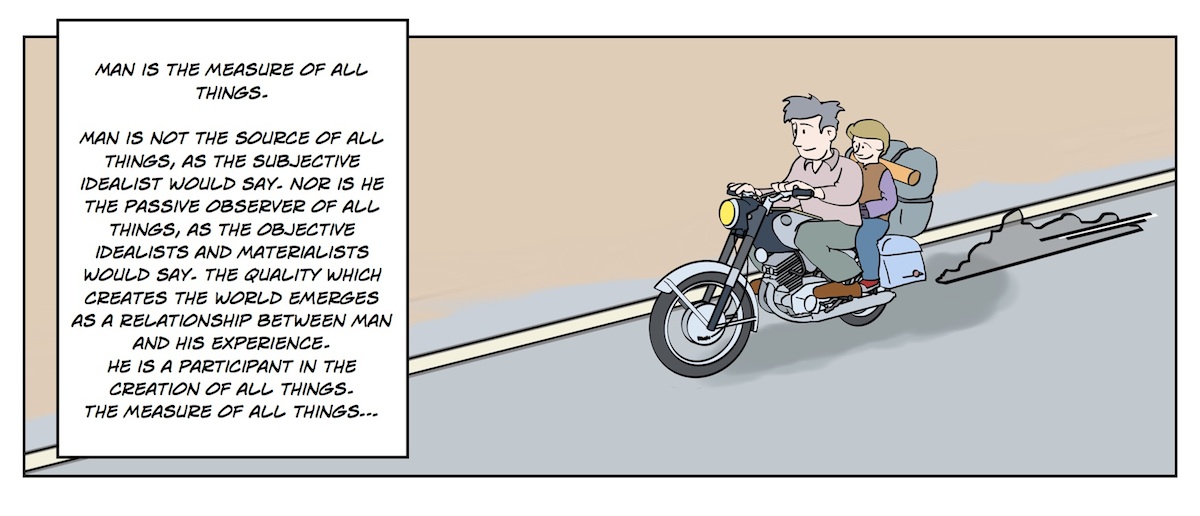In Zen and the Art of Motorcycle Maintenance Robert Pirsig wrestled with the contradictions and alienation that has resulted from the separations between mind and matter - subjective and objective, rationality and emotion, values and morality, classical and romantic attitudes, form and function, science and art - that are embedded in Western culture. The Metaphysics of Quality was his solution for reuniting the dichotomies underlying Western thought into a unified ontology of human experience.
In Lila he describes the delicate balance between static and dynamic quality that is necessary to achieve stability in life (if not satisfaction). Static quality being the ratchet (essential friction1) that protects us from collapsing into instability, and dynamic quality being the impetus to innovate in order to adapt to change and to discover more satisfying solutions for living.
Robert Pirsig's books, Zen and the Art of Motorcycle Maintenance and Lila, were an important source of inspiration for our recent book What Matters. In this book we explore the implications of Pirsig's Metaphysics of Quality for applied cognitive science and design. The major theme that 'experience' is ontologically basic, and that the components of 'mind' and 'matter' or 'subjective' and 'objective' are derivative aligns well with William James' philosophy of Radical Empiricism and C.S. Peirce's triadic model of Semiotics.
Farewell Robert! You taught us the meaning of areté through example. Thank you for allowing us to share part of the journey toward quality through your books.
- Åkerman, Nordal (ed.) (1998). The necessity of friction. Boulder, CO: Westview Press.

Links to more information about Robert Pirsig:
https://www.theguardian.com/books/2017/apr/25/robert-pirsig-obituary
